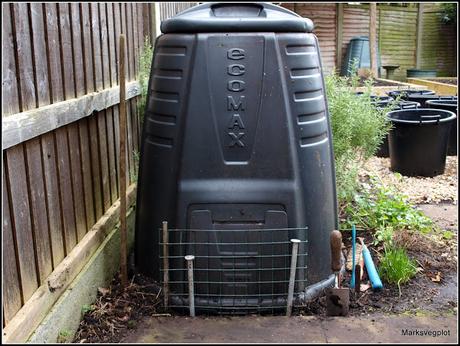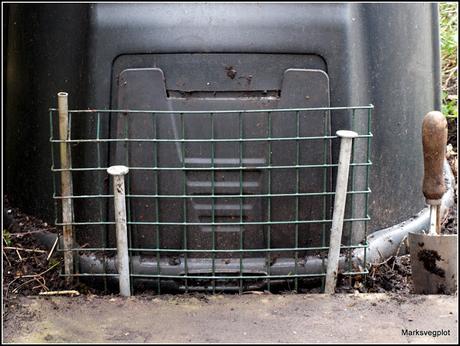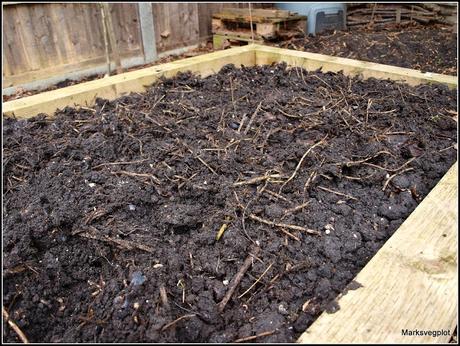I am a fanatical collector of composting materials. All suitable garden waste goes in my bins, as do all the vegetable peelings from the kitchen. I have also been known to scour the local lanes in search of horse manure, bracken and nettles!
I have three of the plastic "Dalek bins", though one of them is currently only used for Autumn leaves. You can see two of them in this photo:

The wire grille contrivance is a way of stopping animals from unpacking the bin via that (useless) little door. If I don't barricade it in this way, the badgers / foxes / whatever just pull the material out and scatter it around, in their search for worms. I have to admit that the bins are usually full of worms, so they are presumably an attractive target for the animals. In all honesty, the worms do most of the work, and all I have to do is stir the decomposing material once in a while, to aerate it. I use a long stick for this - you can see it at the left in the photo above, between the bin and the fence.

The worms do such a good job of processing the material that it gets reduced in volume very successfully, so I normally empty my compost bins only once a year, occasionally twice. What I do is remove the top 50% or so of the material, storing it temporarily on an old groundsheet. Then I lift off the plastic bin, allowing easy access to the good stuff at the bottom of the pile. I use a spade to repeatedly fill my trusty Trug-tub, and then transport the compost to where I want it to go. Each bin usually yields about 15 - 20 Trug-tubs-full.
And this is where most of it ends up - the raised beds:

One of the big benefits of the raised bed system is that it helps you to put the good stuff only where it is most needed - a concentrated dose of goodness! In the photo above, the things that looks like twigs are actually last year's bean-stalks. They are very soft now, and crumble when touched.
I did the compost-spreading task just a couple of days ago. It needs to be done on a dry day, because it is a messy enough job without being complicated by rain. It's also a good idea to do it early in the year so that the compost has time to break down fully and be incorporated into the soil by the worms before prime sowing time in late March / early April. The local Blackbird population will have a Field Day kicking the compost all over the place in their search for worms, so I need to give them a week or two to do this before attempting any sowing!
